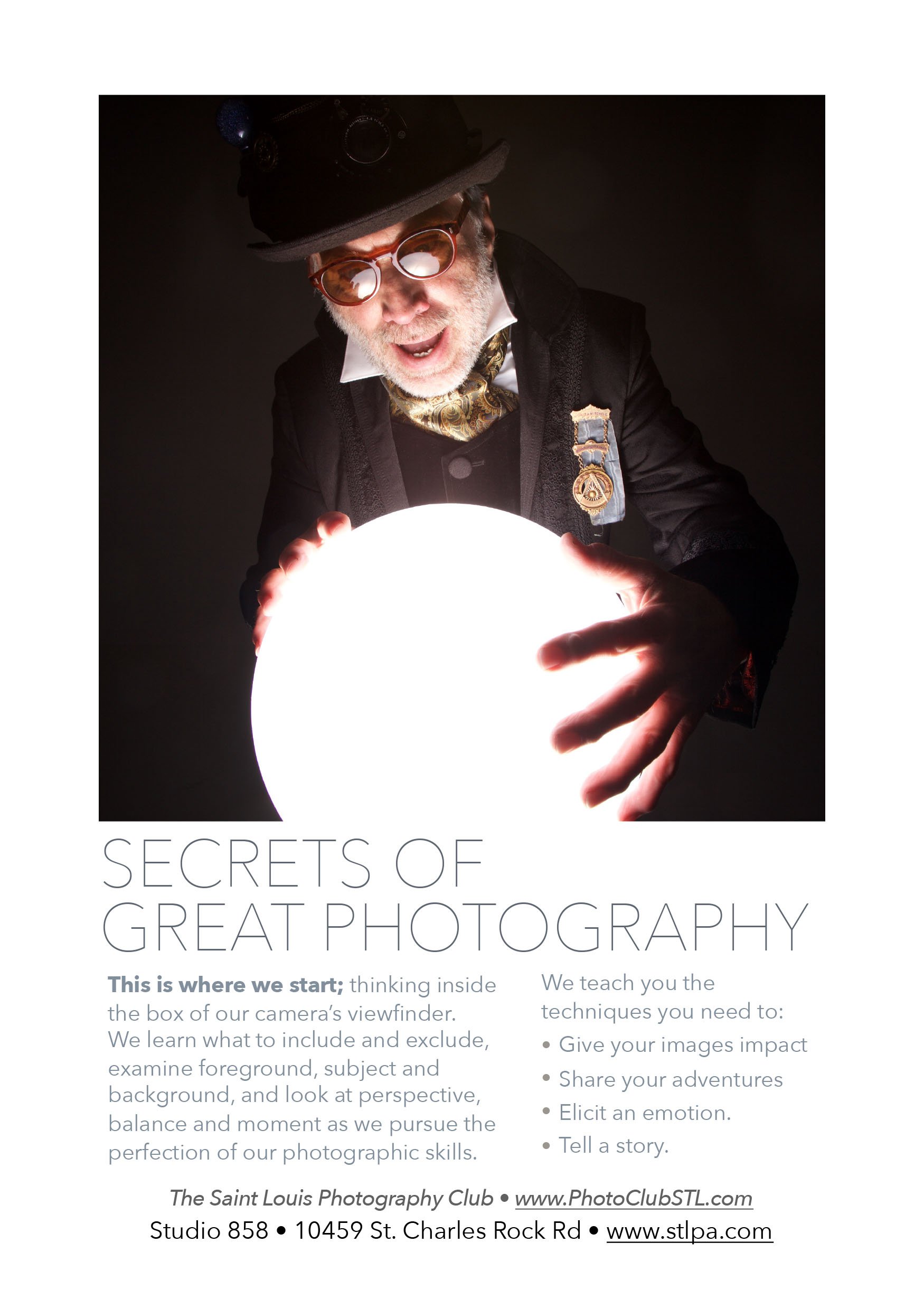

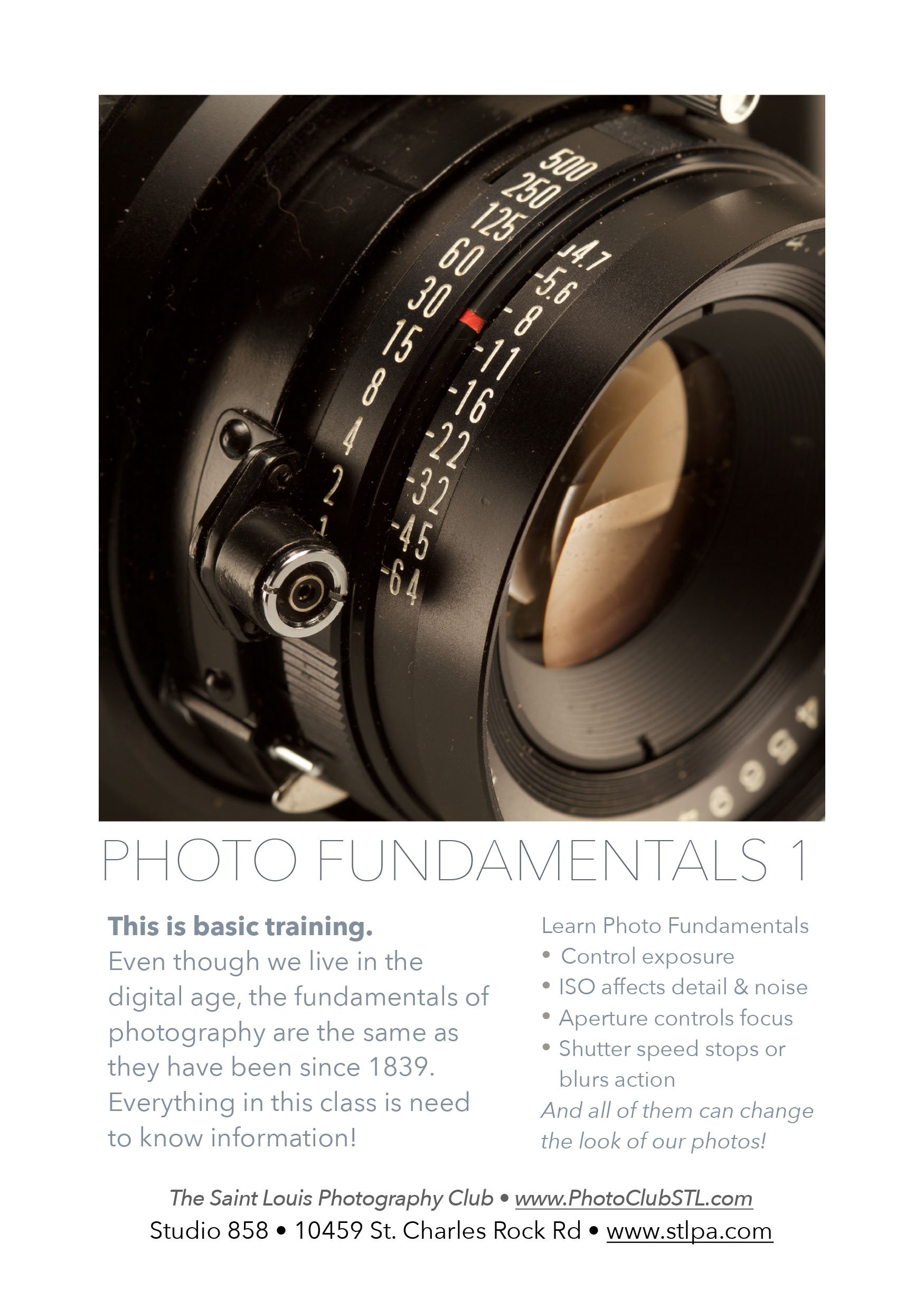
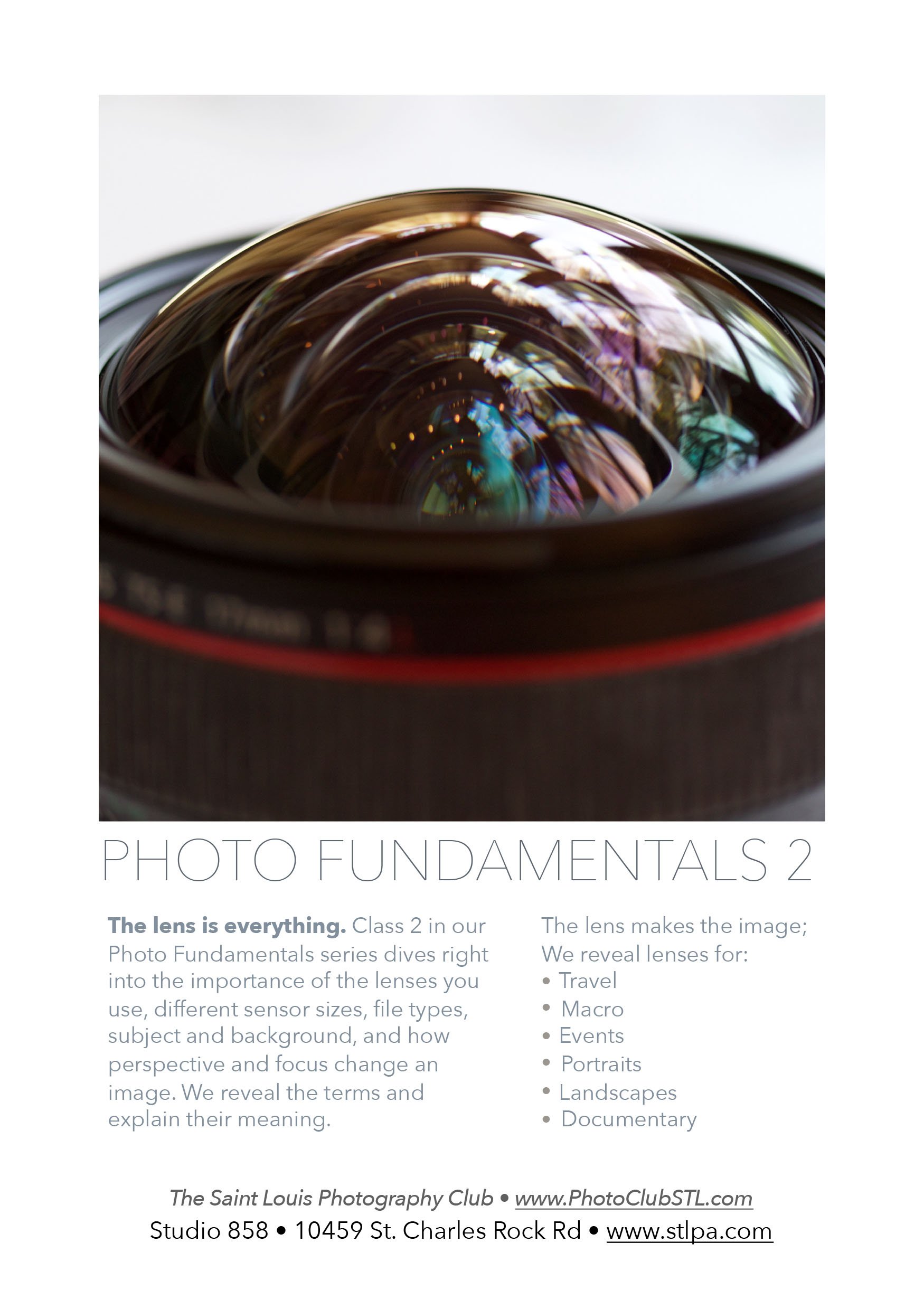

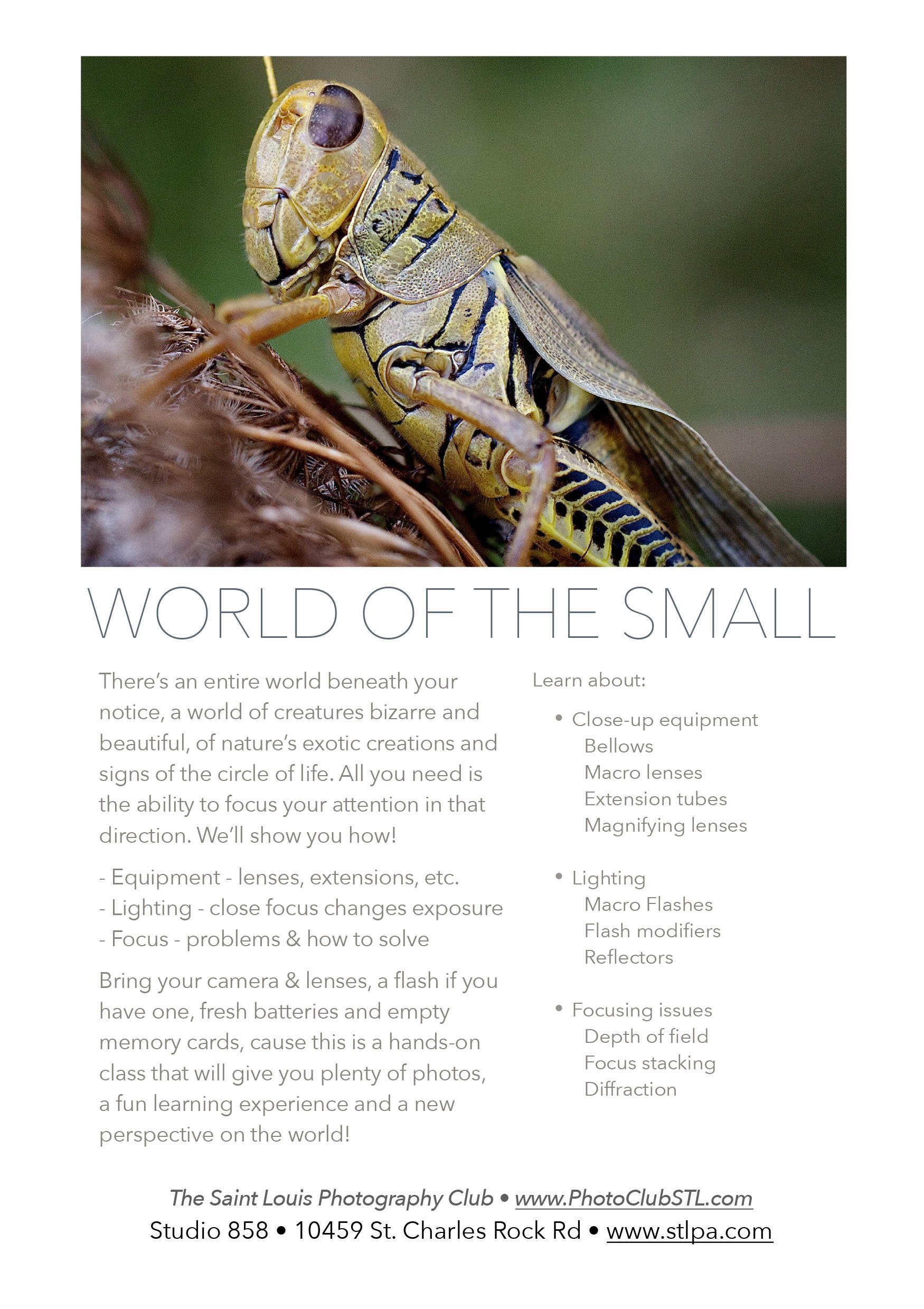

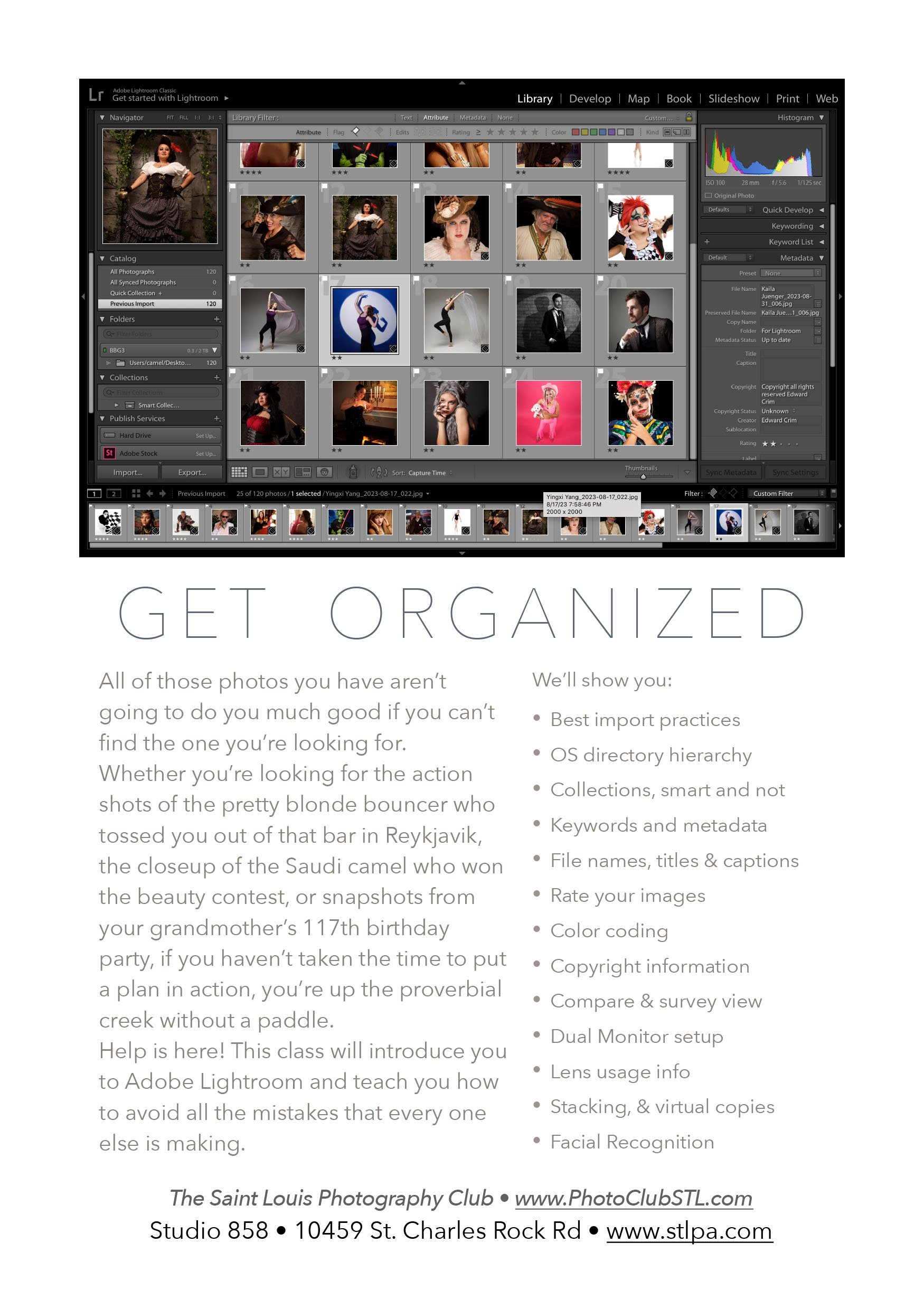
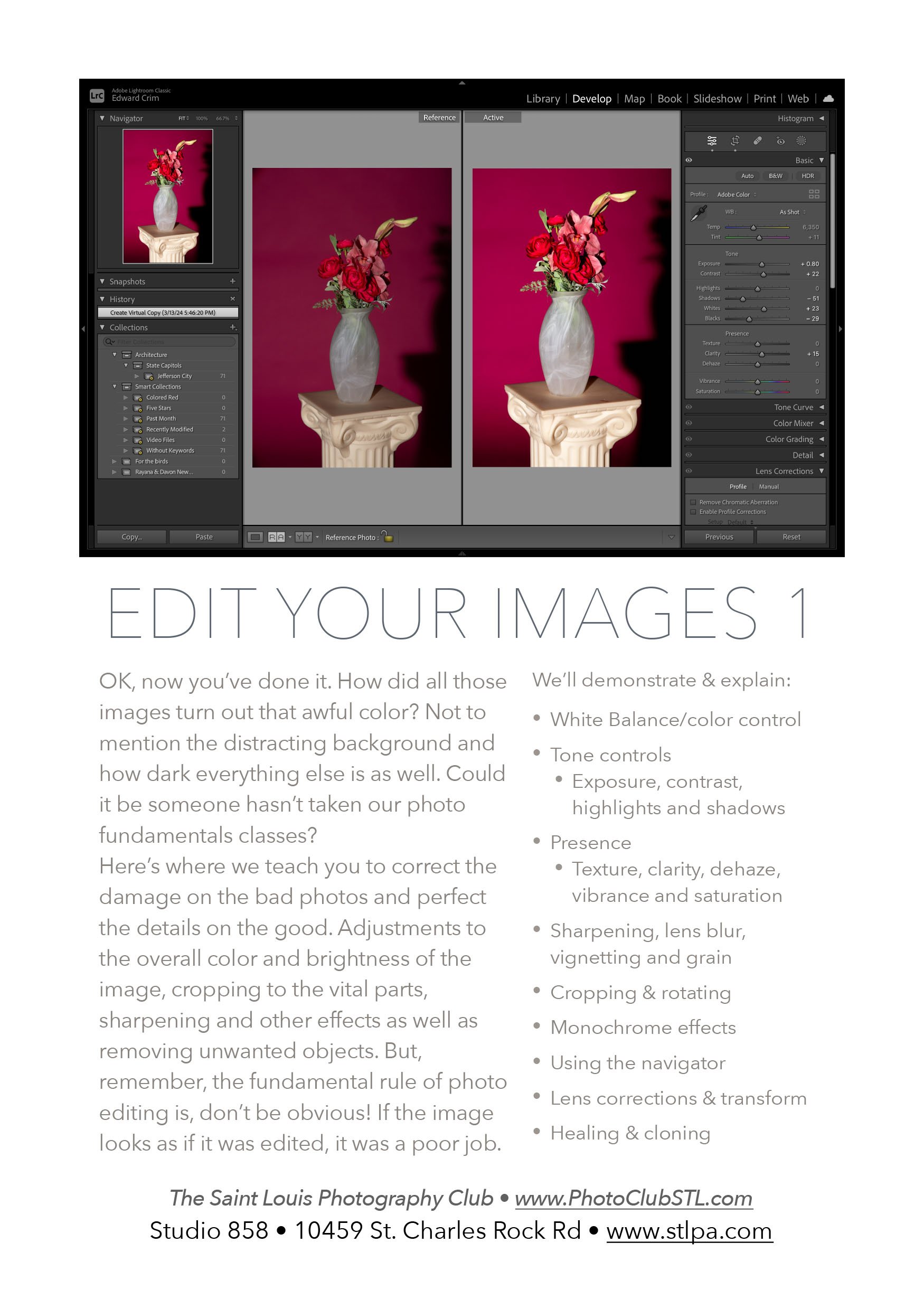
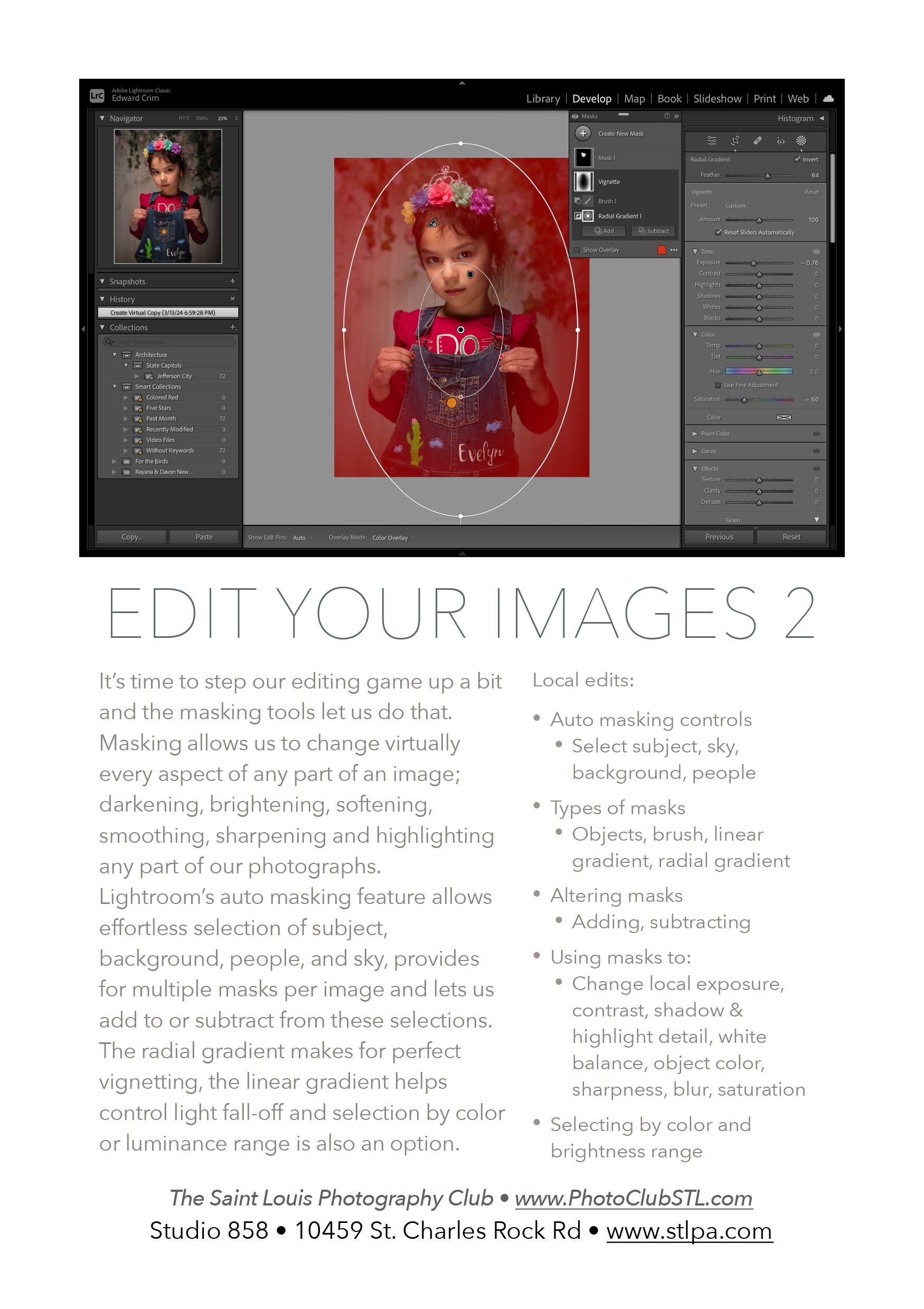
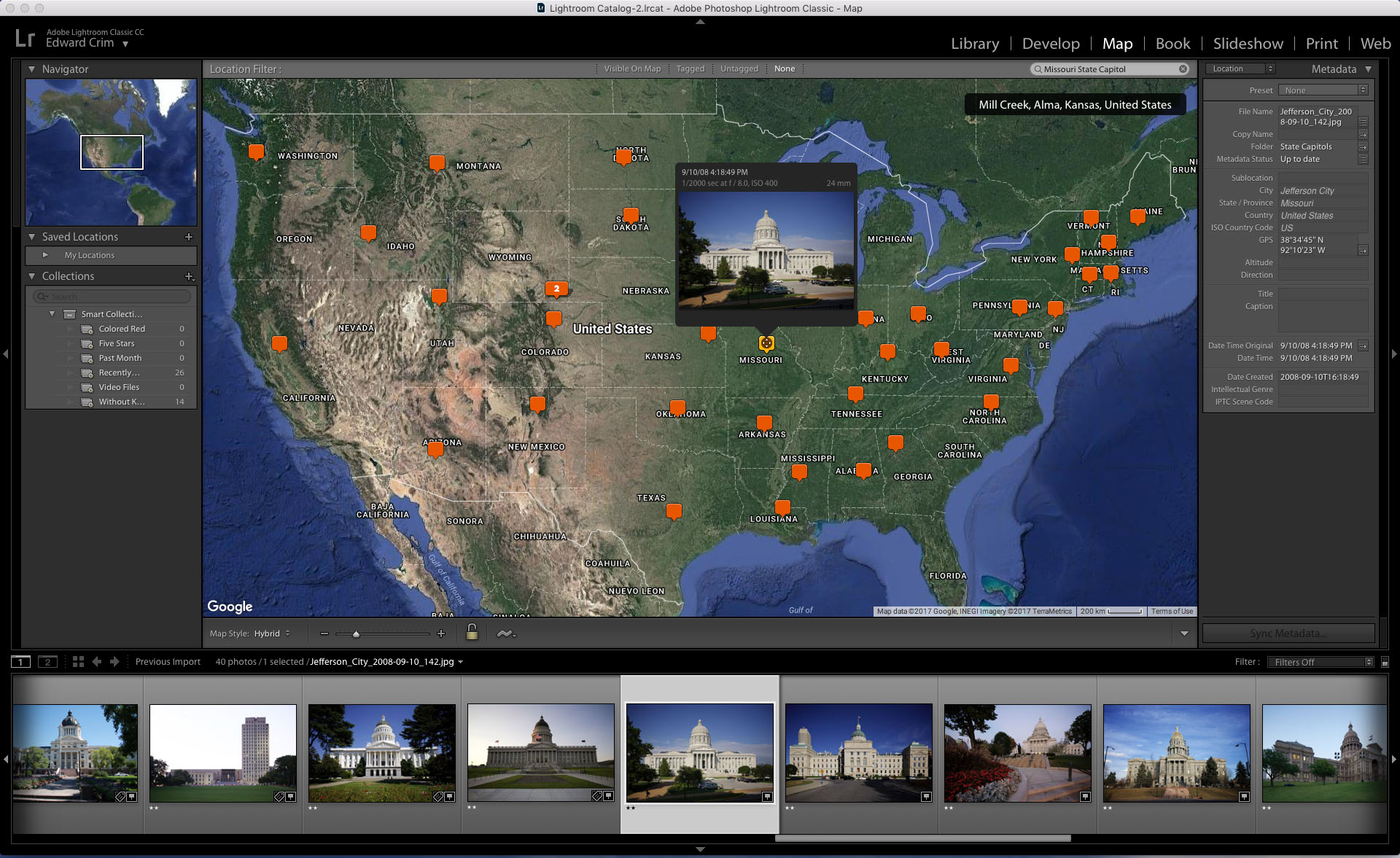
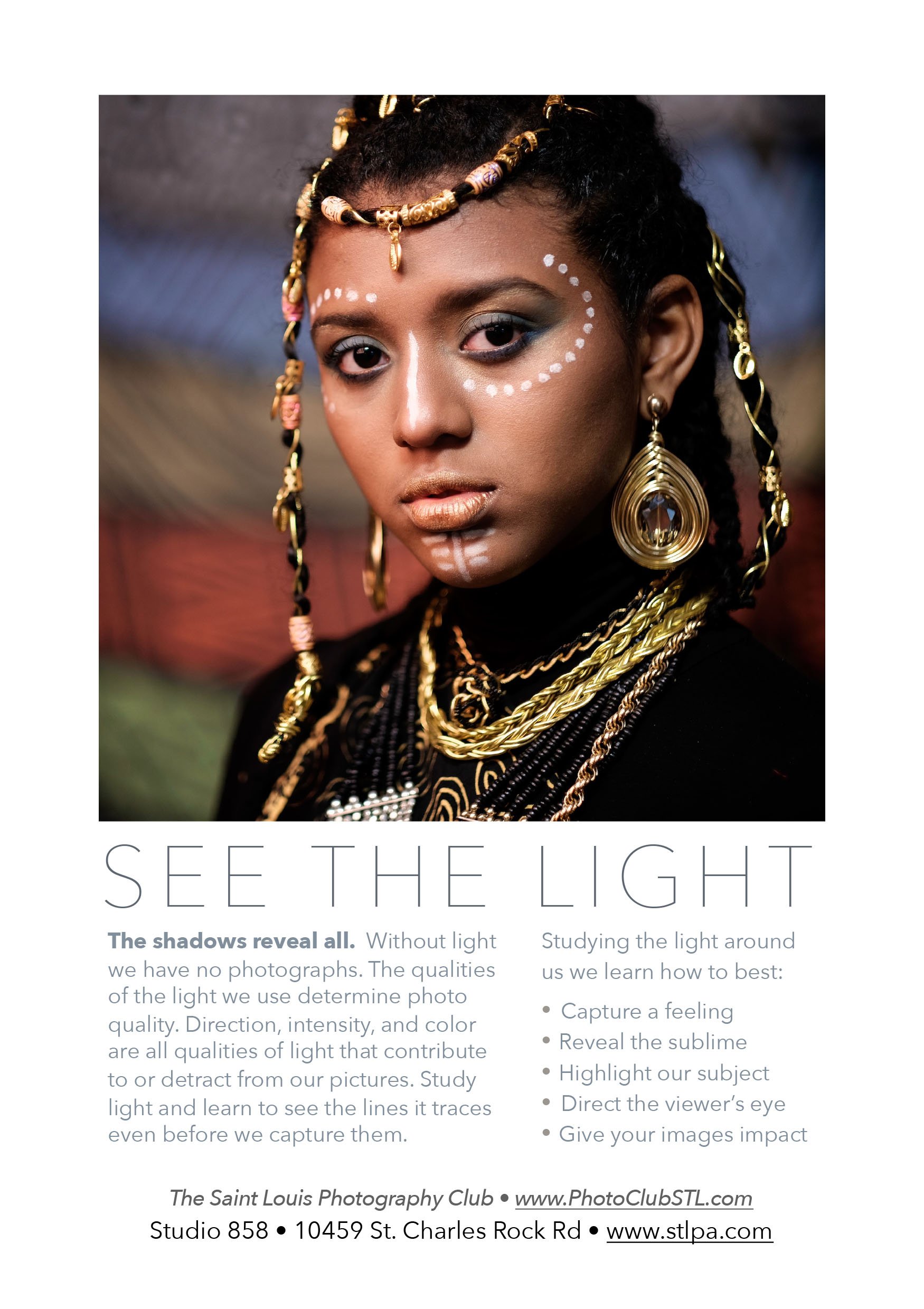

This is where we start; thinking inside the box of our camera’s viewfinder.
We learn what to include and exclude, examine foreground, subject and background, and look at perspective, balance and moment as we pursue the perfection of our photographic skills.
We teach you the techniques you need to:
• Give your images impact
• Share your adventures
• Elicit an emotion.
• Tell a story.

Have you read the manual?
Digital cameras are computers and there is a lot to learn if you want to get the most from them. This is the class for you! We’ll cover the digital Interchangeable Lens Camera (ILC) and show you the knowns & the unknowns so you can know what questions to ask!
You’ll learn about:
• ISO, Aperture & Shutter Speed
• RAW, jpeg, picture styles
• Different camera modes
• Focus, flash & a lot more!

This is basic training.
Even though we live in the digital age, the fundamentals of photography are the same as they have been since 1839. Everything in this class is need to know information!
Learn Photo Fundamentals
• Control exposure
• ISO affects detail & noise
• Aperture controls focus
• Shutter speed stops or blurs action
And all of them can change the look of our photos!

The lens is everything.
Class 2 in our Photo Fundamentals series dives right into the importance of the lenses you use, different sensor sizes, file types, subject and background, and how perspective and focus change an image. We reveal the terms and explain their meaning.
The lens makes the image; We reveal lenses for:
• Travel
• Macro
• Events
• Portraits
• Landscape
• Architecture
• Documentary

Light in a handy box. A flash is your most useful camera accessory, bringing light everywhere you need it. We reveal the formula to using flash to create gorgeous images, freeing you from relying on whatever off-color, dim, and coming-from-the-wrong-direction light Mama Nature and her minions give you!
We’ll show you how to:
- Freeze action
- Lighten shadows
- Balance flash & ambient light
- Control where light goes
- Evaluate accessories
- Bounce the light

A macro lens is a useful thing to have, opening to your creative side a world to which you may never have paid attention. Many lenses are available, but knowing which one to buy and why, is a must. This class will walk you through:
- The issues of lighting - how close focus changes exposure
- Depth of field; much shallower at high magnification
- How close focus, focal length, affect magnification
- Alternatives to Macro lenses that will get you closer
Get ready for fun and a new perspective on the world!

Yep. People are my favorite kind of people, but they can be a bit difficult to deal with. That’s why you need this class! How we stand, lean and sit, hold our hands and head, and where we look, all convey messages to others. We'll show you:
How to pose people; groups, individuals, men and women.
Which lenses to use
How to work with natural and artificial light
The techniques of the street photographer
It's a great class sure to help you improve your photos of people, so sign up now, and don't forget to bring your camera, ready to shoot.

Workflow is the key to keeping control of your photographs. Taking photos is only the beginning, Organizing them lets you find them again, and Lightroom's complete set of tools makes organizing easy. We'll teach you:
- The best way to set up folders
- How Lightroom's collections work
- How keywords, titles and file names help
- Smart collections - they do the work for you
- Sorting, color coding and rating your images
Bring your laptop with Lightroom installed and we'll get to work!

Editing your images. If you're a good photographer you won't have to spend much time here, and even less after we've shown you the ropes on a great editing workflow. Here’s what we’ll cover:
- Understanding the tools and what they do
- The Basics: White Balance, exposure and contrast
- Clarity, vibrance and saturation; when to use them
- Tone Curves - How they work
- The histogram; a map of pixel brigntness

It’s time to step our editing game up a bit and the masking tools let us do that.
Masking allows us to change virtually every aspect of any part of an image; darkening, brightening, softening, smoothing, sharpening and highlighting any part of our photographs.
Lightroom’s auto masking feature allows effortless selection of subject, background, people, and sky, provides for multiple masks per image and lets us add to or subtract from these selections.
The radial gradient makes for perfect vignetting, the linear gradient helps control light fall-off and selection by color or luminance range is also an option.
Local edits:
Auto masking controls
Select subject, sky, background, people
Types of masks
Objects, brush, linear gradient, radial gradient
Altering masks
Adding, subtracting
Using masks to:
Change local exposure, contrast, shadow & highlight detail, white balance, object color, sharpness, blur, saturation
Selecting by color and brightness range

Everything else you wanted to know about Lightroom but were afraid to ask. And that’s a lot! There’s the map module, the perfect way for the auto mobile photographer to geotag his or her photos, the book module, newly improved in Lightroom CC, the print module, where you can easily create package prints of proof sheets and print them at home, and the Web module, a great way to share your images in a controlled way. Power to the people, courtesy of Adobe corporation.

The shadows reveal all.
Without light we have no photographs. The qualities of the light we use determine photo quality. Direction, intensity, and color are all qualities of light that contribute to or detract from our pictures. Study light and learn to see the lines it traces even before we capture them.
Studying the light around us we learn how to best:
• Capture a feeling
• Reveal the sublime
• Highlight our subject
• Direct the viewer’s eye
• Give your images impact
Sign up here
